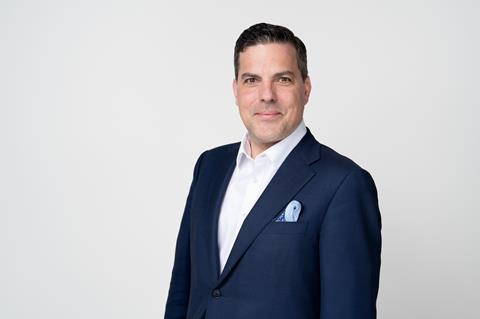MS Reinsurance is doubling down on stability and client partnerships as market volatility and geopolitical uncertainty weigh on the reinsurance sector, according to Jorg Bruniecki, chief underwriting officer, global specialty lines, MS Re

Speaking to GR at RVS 2025, Bruniecki (pictured) said that consistency of approach has been central to the reinsurer’s expansion since he joined in 2022.
“We have a consistent strategy, which we’re coming to Monte Carlo with exactly the same,” he said.
“We invest in building long-term relationships with our clients. We choose the clients we want to be relevant for and then build broad-based portfolios with them.
“That enables us, even in volatile times, to offer stable relationships with a long-term orientation,” he added.
MS Re has expanded significantly over the past three years. When he joined in 2022 the international book consisted of $1.8bn of premium.
“We will finish the year around $3.9 to 4bn. There is already a pronounced trajectory of growth, and we still think we can be more meaningful for our clients,” Bruniecki said.
Stability and capital strength
Bruniecki stressed that MS Re’s ability to rely on its own balance sheet has been a competitive advantage during turbulent phases of the market cycle.
“What many have struggled with was that they are depending on third-party capital,” he explained.
“We know with a long-term and strong shareholder what our position is, and that has been one of our absolute strengths. We could always come to the table early, build relationships on mutual commitments, and provide clarity very early.”
The reinsurer’s focus at Monte Carlo, he suggested, was not simply to discuss 1 January renewals, but to listen to how client strategies are evolving.
“Monte Carlo is just one touchpoint of many,” he said. “We are here to understand what is changing in their business, and in response to it, we have to formulate what our value add is to their journey.”
Managing volatility and unknowns
Bruniecki said reinsurance carriers need to balance the known with the unpredictable, citing riots – translating into strikes, riots and civil commotion (SRCC) claims for insurers – in New Caledonia in 2024 as an example of the unexpected.
“In reinsurance, when the unlikely or unknown happens, you will not be able to price for everything with accuracy,” he said. “You build in margin in your business overall. That is why current discussions around cedent retention levels are so important.
As the market softens, there is greater focus on frequency events – secondary perils, such as hailstorms, wildfire, floods and severe convective storms – which cedents will want to reduce their retention to, and from which reinsurers have been less exposed.
“Clients need to be invested in the business of carrying risk, particularly for secondary perils,” Bruniecki said. “Reinsurers then come in for the volatility part, and sometimes the unknown,” he added.
Geopolitical volatility is another broad factor reshaping reinsurance value, he suggested.
“Uncertainty is certainly on the rise,” Bruniecki said. “The value of reinsurance is higher than ever, because in times of uncertainty, to have a stable partner who can help manage through whatever the market brings is a value that is much higher than before.”
He also pointed to post-loss inflation as a critical issue for the industry, particularly given supply chain disruption and shifting trade policy.
“If there was a large-scale hurricane happening in the US, the question is how will post-loss inflation look, from business interruption…to the cost of materials is potentially heightened,” he said. “For us as an industry, that is something we have to focus on.”
For Bruniecki, the long-term outlook is built on predictability for clients, even as external conditions remain unpredictable.
“What made our success happen was first the consistency and the ability to come to commitments early. Stable and well-working relationships for both parties are the foundation,” he added.










No comments yet